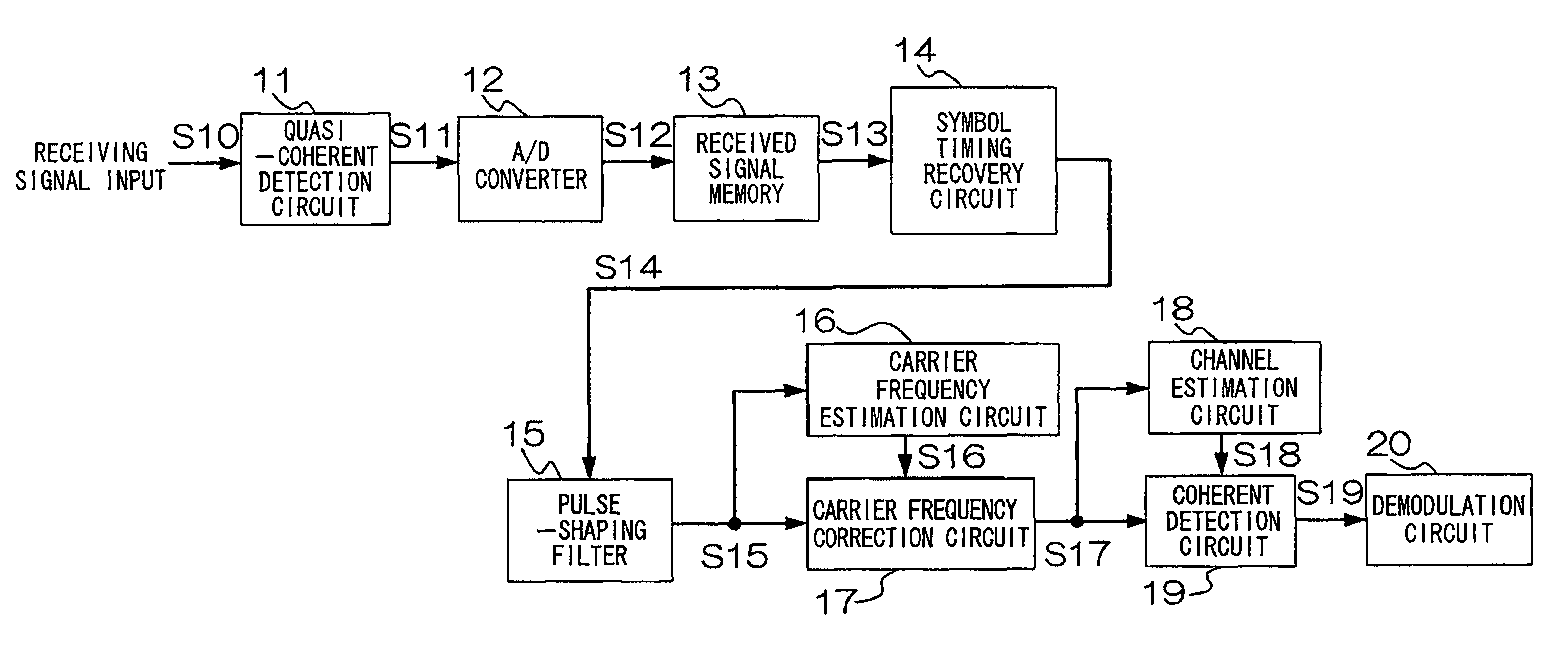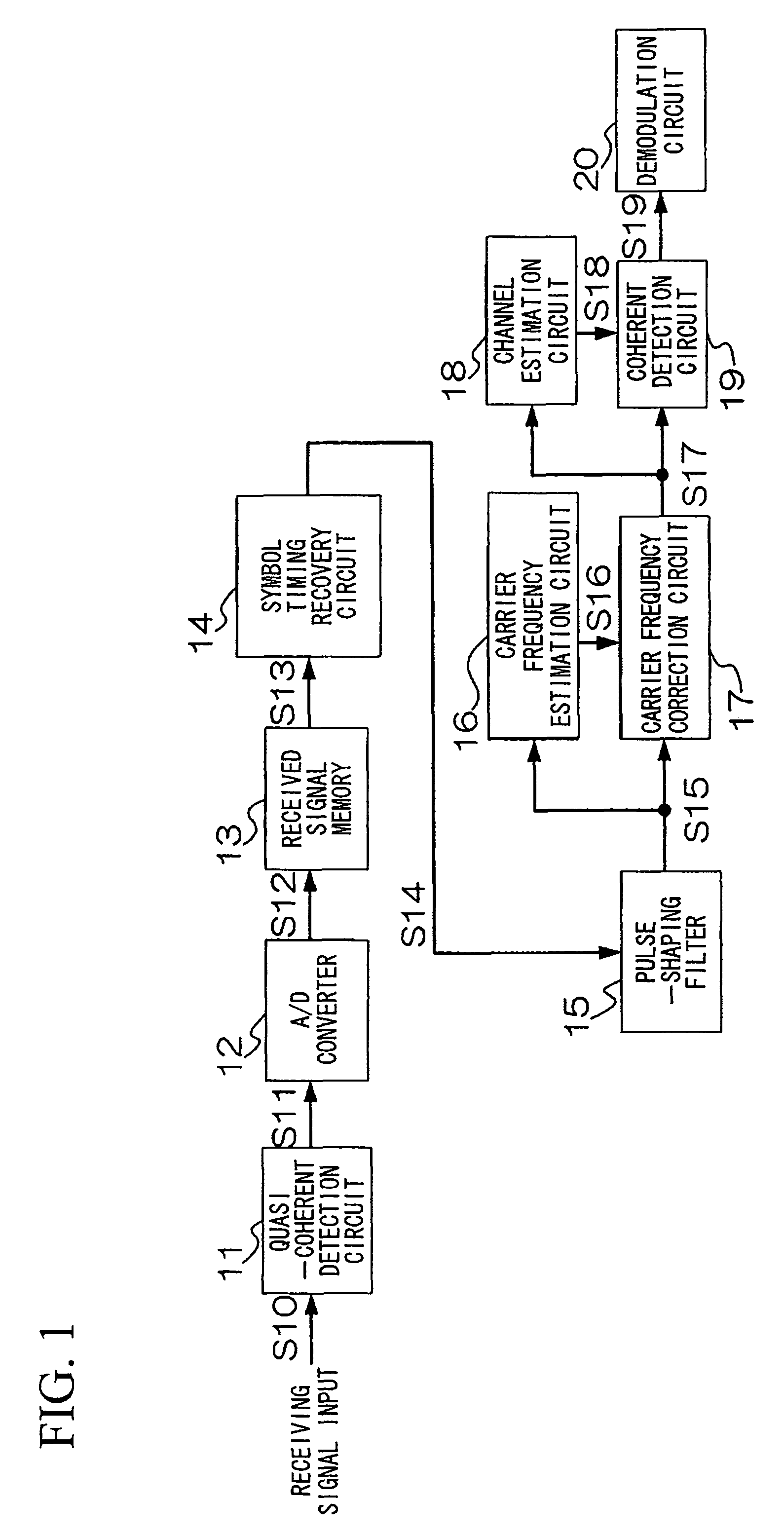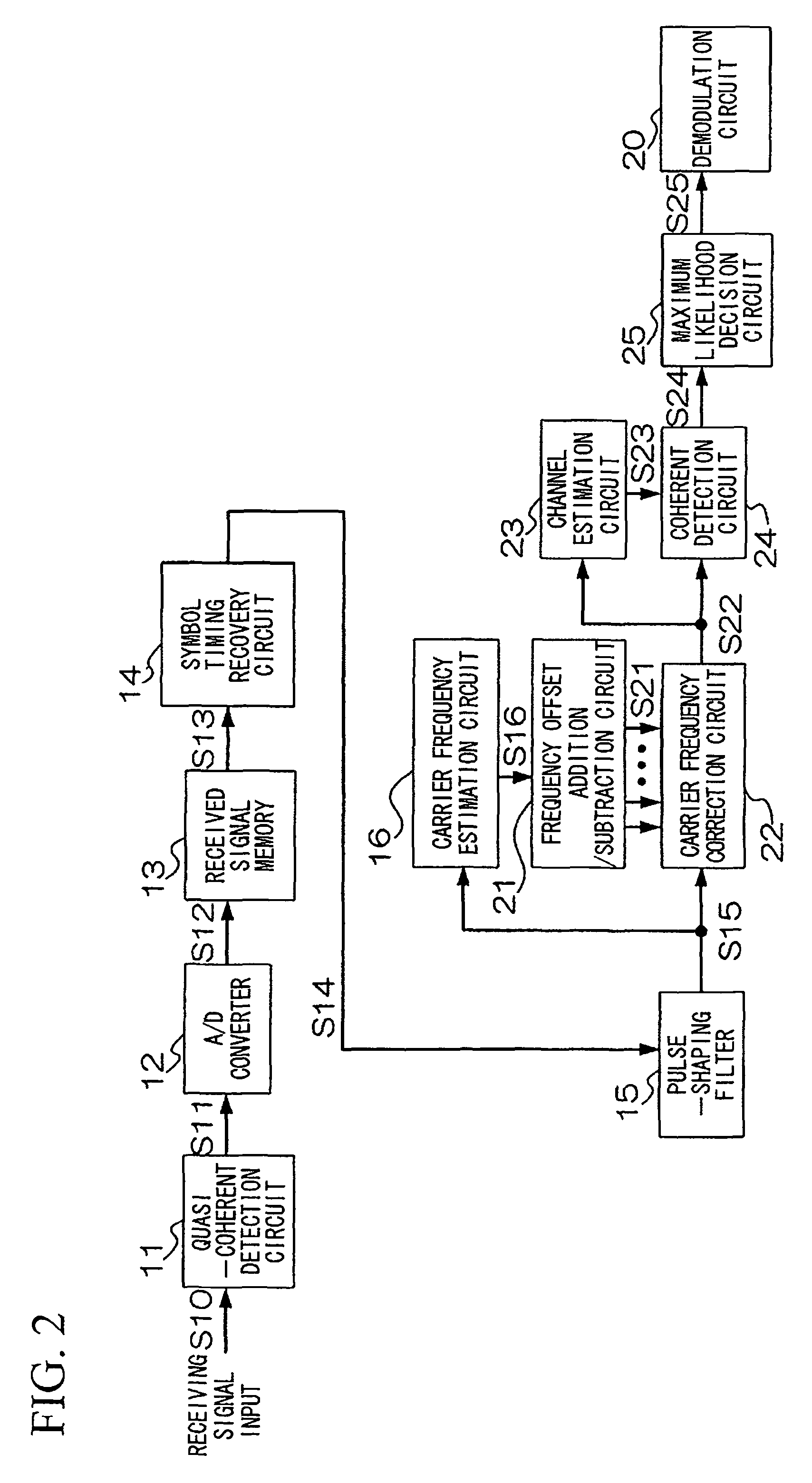Wireless transmitting apparatus, wireless receiving apparatus, wireless transmission method, wireless reception method, wireless communication system, and wireless communication method
a wireless transmission and wireless reception technology, applied in the field of wireless transmission methods, can solve the problems of unavoidable deterioration of transmission efficiency (frame efficiency), deterioration of carrier frequency synchronization performance as the packet length, and deterioration of wireless transmission bit error rate, so as to achieve highly precise carrier frequency synchronization performance, high frame detection efficiency, and high transmission efficiency.
- Summary
- Abstract
- Description
- Claims
- Application Information
AI Technical Summary
Benefits of technology
Problems solved by technology
Method used
Image
Examples
example 1
[0217]An example using the first and second embodiments of the invention shown in FIGS. 1 and 2 will be explained with reference to FIGS. 13 to 15. Cumulative probability distribution of residual carrier frequency estimation error and packet error rate characteristics of the wireless receiving apparatuses of FIG. 1 and FIG. 2 will be compared using computer simulations. FIG. 13 is a diagram of parameter comparison conditions in this example. While the wireless receiving apparatus of FIG. 1 uses a single estimated carrier frequency, the configuration of FIG. 2 uses three estimated carrier frequencies in consideration of the affects of frequency slips. QPSK modulation is used, and it is assumed that the apparatus has a diversity configuration including two receiving antennas, and that the channel is a flat Rayleigh fading channel. The burst length is 148 symbols, the data packet length is 128 symbols (16 bytes), and five pilot signals are provided, each having a length of four symbols...
example 2
[0255]An example using the embodiments of the wireless receiving apparatus and the wireless transmitting apparatus of the invention shown in FIGS. 16, 19, 21, and 22 will be explained with reference to FIGS. 24 and 25. Here, a comparison of packet error rate characteristics is made using computer simulation. FIG. 24 illustrates parameter comparison conditions in this example. It is here assumed that modulation is by QPSK, the channel is a single-path Rayleigh fading channel, and that a short packet with a data packet length of 16 bytes (128 symbols) is used. There are five pilot signals, each having a length of four symbols. A comparison is made of packet error rates of an apparatus without receive diversity and one with two-branch receive diversity with maximal ratio combining in a case where synchronization is made ideal.
[0256]FIG. 25 is a diagram of packet error rate characteristics against carrier-to-noise power ratio in the second example. In this example of the invention, over...
example 3
[0266]FIG. 30 is a diagram of an example of a channel linear interpolation estimation method in a third example of the invention.
[0267]FIG. 31 is a first diagram of an example of a channel averaging interpolation estimation method in the third example of the invention.
[0268]FIG. 32 is a second diagram of an example of a channel linear interpolation estimation method in the third example of the invention.
[0269]FIG. 33 is a diagram of parameter comparison conditions in the third example of the invention.
[0270]FIG. 34 is a diagram of performances in a third example of the invention.
[0271]An example using the wireless transmitting apparatus and the wireless receiving apparatus of the invention shown in FIGS. 16, 19, 21, 22, and 29 will be explained with reference to FIGS. 30, 31, 32, 33, and 34. Packet error rate (PER) characteristics for different channel interpolation methods will be compared using computer simulations.
[0272]As shown in FIG. 30, an interpolation method in the third ex...
PUM
 Login to View More
Login to View More Abstract
Description
Claims
Application Information
 Login to View More
Login to View More - R&D
- Intellectual Property
- Life Sciences
- Materials
- Tech Scout
- Unparalleled Data Quality
- Higher Quality Content
- 60% Fewer Hallucinations
Browse by: Latest US Patents, China's latest patents, Technical Efficacy Thesaurus, Application Domain, Technology Topic, Popular Technical Reports.
© 2025 PatSnap. All rights reserved.Legal|Privacy policy|Modern Slavery Act Transparency Statement|Sitemap|About US| Contact US: help@patsnap.com



